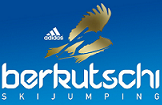Recent news:
4000th facility has been added to the Ski Jumping Hill Archive
7000th ski jumping hill added to the Archive!
New Granåsen ski jump in Trondheim inaugurated
Fire destroys ski jumps in Biberau-Biberschlag
Copper Peak: Funding of the renovation finally secured
Send us your ski jumping hill photos and information via email!
Latest updates:
2025-04-08
2025-04-07
2025-04-06
2025-04-05
2025-04-04
Advertisement:
Partner:




 Snoqualmie Pass
Snoqualmie Pass
Summit
Data | History | Hill records | Contact | Links | Map | Photo gallery | Comments
.
Beaver Lake Hill:
| K-Point: | 64 m |
 Longest jump: Longest jump: |
66.1 m (217 ft) (Ray Hendrickson  , 1943-03-27) , 1943-03-27) |
  Hill record: Hill record: |
64.9 m (213 ft) (Olav Ulland  , 1943-03-27) , 1943-03-27) |
| Further jumps: | K48, K27, K20 |
| Plastic matting: | no |
| Year of construction: | 1929 |
| Conversions: | ca. 1945 |
| Status: | destroyed |
| Ski club: | Pacific Northwest Ski Association |
| Coordinates: | 47.418039, -121.424708 
 |
History:
In 1909 the "Milwaukee Railroad" track was constructed across 919 m high Snoqualmie Pass and in 1912 a tunnel through the Snoqualmie summit was completed. In early 1920's first winter sports activities around the pass road had started.
Seattle Ski Club, which was founded by Norwegian immigrants, built its first ski jumping hill at Beaver Lake at Snoqualmie west summit in 1929-30. Annual competitions were hosted there, which were organized by the "Pacific Northwest Ski Association", which formed in early 1930's. PNSA, which included Sahalie Ski Club and Seattle Ski Club among others, further promoted skiing and ski jumping activities at Snoqualmie Pass, extending the facility at Beaver Lake to a total of 4 ski jumping hills.
The annual competitions of Seattle Ski Club and the PNSA, which were often held in a "four-way" format with downhill and slalom skiing, cross-country and ski jumping, were well-attended by thousands of spectators, who often came to Snoqualmie Pass by special trains from all over the Pacific Northwest.
Even ski jumping idols Sigmund Ruud and Alf Engen took part in the competition in March 1937; and in 1938 also Birger Ruud joined the event, which was attended by 10,000 spectators.
Though the ski jumps at Beaver Lake were located remotely in a valley that was difficult to access, they were still used even after the opening of the large hill in "Snoqualmie Ski Bowl" at Mount Hyak in 1940. Ski jumping activities at Beaver Lake even continued throughout World War II, at least until end of 1940's.
 Hill records K64 (Men):
Hill records K64 (Men):
 Contact:
Contact:
 Links:
Links:
 Map:
Map:
 Photo gallery:
Photo gallery:
Advertisement:




 Hofstetten-Flüh
Hofstetten-Flüh  Radenthein
Radenthein  Ogrodniczki
Ogrodniczki Bled
Bled













Post comment: